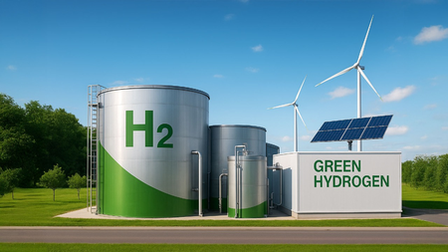
New Delhi — Green hydrogen is emerging as a critical fuel for reducing emissions in hard-to-abate sectors such as steel, fertilisers, shipping, aviation, and transport, according to an article by former G20 Sherpa and NITI Aayog CEO Amitabh Kant.
In his article published in India Narrative, Kant argues that while regions like Europe, Japan, Korea, and the Middle East are investing billions into renewable hydrogen, India possesses the ideal mix of natural resources, policy support, and industrial demand to position itself as the world’s leading hub for green hydrogen.
He outlines five major strengths driving India’s advantage:
Affordable renewable power: India offers the world’s lowest round-the-clock renewable energy prices—between ?4.60 and ?5 per kWh—making hydrogen production highly cost-competitive.
Supportive policy framework: The National Green Hydrogen Mission provides ambitious targets and regulatory clarity, inspiring confidence among investors and industries.
Strong industrial ecosystem: India’s established infrastructure—engineering, pipelines, refineries, and ports—creates a ready foundation for scaling green hydrogen production.
Robust domestic demand: Large existing markets for fertilisers, steel, refining, and chemicals ensure that demand for hydrogen will come not just from exports but from within India.
Vast export potential: Global markets like Europe and Japan are seeking clean hydrogen imports, and India is well placed to serve as a reliable supplier.
Highlighting India’s recent progress, the article notes that the Solar Energy Corporation of India (SECI) has already awarded contracts for producing 450,000 tonnes of green hydrogen per year, with major players such as Reliance, Greenko, ACME, and L&T participating. SECI has also finalised a 724,000-tonne green ammonia tender that aggregates demand from 13 fertiliser plants across the country, achieving a record-low global price of ?55.75 per kg.
Further, Indian Oil Corporation has launched a landmark project at its Panipat refinery, while Bharat Petroleum has joined hands with Singapore’s Sembcorp to develop green hydrogen and ammonia ventures in India.
Kant acknowledges that the path forward is not without challenges—high capital costs, certification issues, skill gaps, and project delays among them. However, he suggests solutions such as concessional and blended financing, adoption of international certification standards, bilateral recognition agreements, and a national skilling mission tailored to hydrogen technologies.
The article concludes that by producing the world’s cheapest green hydrogen, developing value-added exports like green steel and ammonia, and building a reputation as a trusted global supplier, India can seize leadership in the clean energy revolution.
“The green hydrogen race has begun—and while many nations are sprinting ahead, India is uniquely placed to cross the finish line first,” the article concludes.
With inputs from IANS